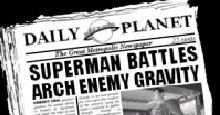Basic Teaching Techniques for Moving Images
The eight basic
techniques described on these pages are designed to
help you unravel the codes and conventions of the
moving image, and enable you to use a wider range
of film and video texts in the classroom. As you
and your pupils unpack the layers of meaning, you
will be helping them to develop their general
skills as more critical, attentive and
knowledgeable readers of the moving image.
Learning Objective
Pupils should
learn that:
• Meaning can change when information is presented in different forms or transposed to another medium.
• Each medium has its own language, conventions and genres.
• Moving image is more appropriate for some kinds of content or structure, and print is more appropriate for others.
• Meaning can change when information is presented in different forms or transposed to another medium.
• Each medium has its own language, conventions and genres.
• Moving image is more appropriate for some kinds of content or structure, and print is more appropriate for others.
Key Questions
• What can
you tell in print that you cannot tell or
show in moving images?
• What can you tell or show in moving images that you cannot tell in print?
• Which medium do you think is best for the story/information/ideas you are conveying?
• Is a real ‘translation’ ever possible from one medium to another?
• What can you tell or show in moving images that you cannot tell in print?
• Which medium do you think is best for the story/information/ideas you are conveying?
• Is a real ‘translation’ ever possible from one medium to another?
Generic Translations
• Pupils ‘translate’ a moving image text – eg documentary, TV news item, TV or film commercial, scene from a feature film – into a print genre such as a newspaper item, a magazine feature, an extract from a novel, a short story or a poem.• Pupils translate a print text into moving image form - first as script or storyboard, and then if possible as video (a brief extract or ‘try-out’ of one scene).
